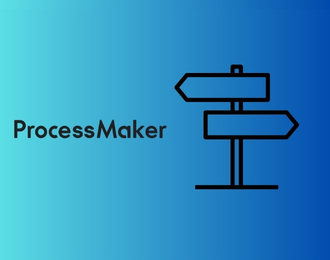What is Staff Scheduling Automation
Staff scheduling automation is an intelligent workforce management system that optimizes employee shift assignments, time-off requests, and coverage requirements while eliminating manual scheduling errors and reducing administrative burden. Healthcare organizations implementing automated scheduling typically see a 30% reduction in overtime costs and save managers an average of 8 hours per week previously spent on manual roster creation and adjustments. When a hospital emergency department automates its scheduling, it can instantly account for staff certifications, shift preferences, and patient volume patterns to maintain optimal coverage levels, whereas manual scheduling can lead to understaffing, employee burnout, compliance violations, and increased labor costs through inefficient shift distribution and last-minute schedule changes.
How to Automate Staff Scheduling Automation
The chaos of manual staff scheduling is costing your organization far more than you realize — endless spreadsheets riddled with conflicts, last-minute scrambles to fill shifts, and frustrated employees dealing with inconsistent schedules that disrupt their work-life balance. These inefficiencies create a ripple effect throughout your entire operation: overtime costs spiral out of control, employee turnover increases due to scheduling dissatisfaction, and managers waste countless hours each week juggling availability requests, shift swaps, and coverage gaps. The financial impact is staggering — organizations typically see 15-25% of their labor costs attributed to scheduling inefficiencies, while managers spend up to 8 hours per week on scheduling tasks that could be automated. Staff scheduling automation transforms this chaotic landscape into a streamlined, intelligent system that delivers immediate ROI through reduced administrative overhead, optimized labor costs, and dramatically improved employee satisfaction.
FlowForma Copilot revolutionizes how you implement staff scheduling automation by eliminating the complexity traditionally associated with process transformation. Whether you start with a simple text description of your scheduling needs, upload an existing form, or simply speak your requirements aloud, Copilot instantly structures your entire scheduling workflow with intelligent steps, dynamic questions, and smart rules that adapt to your organization's unique requirements. The platform's intuitive approach means you can review, customize, and test your automated scheduling process in minutes rather than months — transforming tedious manual coordination into an effortless, rule-driven system that handles shift assignments, conflict resolution, and availability management automatically. This seamless transition from scheduling chaos to automated efficiency doesn't just save time; it creates a foundation for consistent, fair, and optimized workforce management that scales with your business needs. Ready to discover how quickly you can transform your scheduling headaches into a competitive advantage?
Step-by-Step Implementation
- With FlowForma Copilot, creating structured staff scheduling is effortless. Provide a text prompt, upload a form or flow diagram, or use voice input to get started!
- FlowForma Copilot automatically structures your staff scheduling process using steps, questions, and rules at lightning speed.
- Review your staff scheduling process, and once satisfied, click “Build” to bring it to life.
- Open each section to review the questions and rules suggested by Copilot. Click here to define the conditions dynamically to fit your requirements.
- Click on "OK".
- Define the actions that should take place when they are met. Click “Save” to apply your logic.
- After customizing your staff scheduling process with rules and automation, click “Save” to securely store all changes.
- Click “Test Form” to preview how your process functions in a real-world scenario.
- At the top, you'll see the entire staff scheduling process is seamlessly structured in minutes with FlowForma Copilot! Thanks to smart rules and automation, your staff scheduling process is now fully optimized and ready to deploy — effortlessly transforming the way you work!
Conclusion
Staff scheduling automation represents a transformative shift from chaotic manual processes to an intelligent workforce management system that delivers immediate, measurable results. By implementing automated scheduling solutions, organizations can eliminate the burden of manual roster creation, reduce overtime costs by up to 30%, and free managers from spending countless hours juggling shift assignments and coverage gaps. The seamless integration of employee preferences, certifications, and workload patterns creates a dynamic scheduling environment that promotes both operational efficiency and staff satisfaction.
To begin your automation journey, start by documenting your current scheduling pain points and measuring the time spent on manual scheduling tasks within the first week. Within the first month, map out your organization's specific scheduling requirements, including shift patterns, qualification requirements, and coverage rules. For long-term success, establish clear metrics to track improvements, such as reduction in overtime costs, decreased time spent on administrative tasks, and improved employee satisfaction scores. Remember to engage key stakeholders early in the process and maintain open communication channels to ensure smooth adoption.
When implementing scheduling automation, be mindful of common pitfalls that can impact success. Resist the temptation to replicate existing manual processes exactly - instead, use this opportunity to optimize and streamline your scheduling workflows. Additionally, ensure adequate training and support are provided to all users, as even the most sophisticated automation solution requires proper understanding to maximize its benefits. Pay particular attention to compliance requirements and build these into your automated rules from the start to prevent potential regulatory issues.
FlowForma's intelligent scheduling solution transforms complex workforce management challenges into streamlined, efficient processes that adapt to your organization's unique needs while delivering consistent results across all departments. The platform's intuitive approach, combined with powerful automation capabilities, enables organizations to reduce scheduling conflicts by up to 80% while reclaiming valuable administrative time - schedule your personalized demo today to discover how quickly you can transform your scheduling challenges into a competitive advantage.
.png) By
By 




